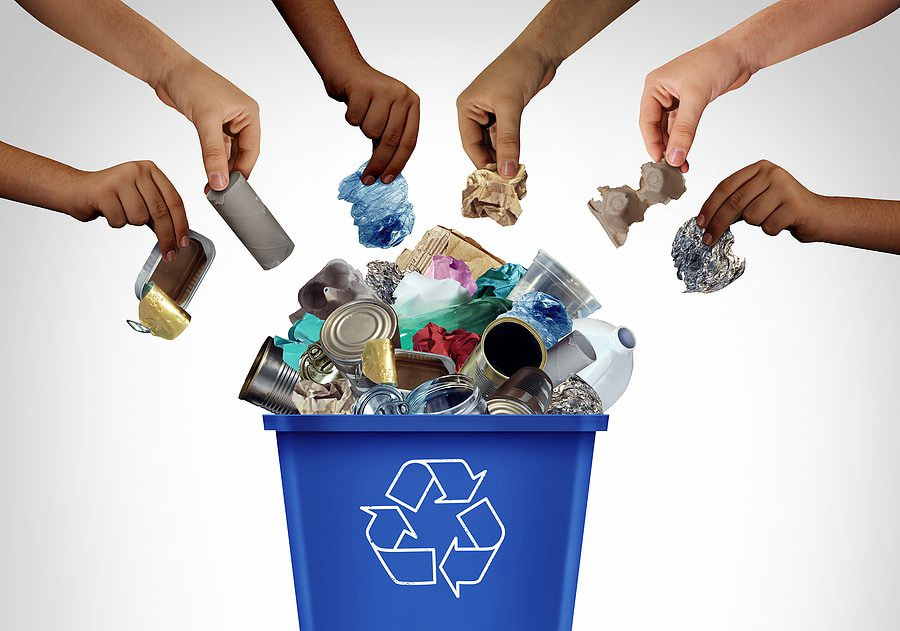
In an era marked by growing environmental concerns, identifying and implementing sustainable waste removal methods is paramount for fostering a healthier planet. The most effective strategies prioritise minimising waste generation, promoting recycling initiatives, and adopting practices that reduce environmental impact.
Skips for rent facilitate sustainable waste removal by promoting efficient disposal, encouraging recycling, and minimising environmental impact through responsible waste management practices.
Embracing sustainable waste removal practices represents a collective commitment to a more resilient and ecologically responsible future, where the circular economy principles guide our approach to managing and minimising waste.
Recycling:
Recycling plays a pivotal role in promoting sustainable waste removal methods by diverting materials from landfills and reducing the demand for virgin resources. It conserves energy, lessens environmental impact, and curtails pollution associated with raw material extraction.
Recycling reduces greenhouse gas emissions and conserves valuable resources by converting used materials into new products. Additionally, it fosters a circular economy, where materials are reused, minimising the overall environmental footprint.
Community-wide recycling initiatives, coupled with effective waste sorting and collection systems, contribute significantly to waste reduction efforts. Waste management becomes more sustainable and environmentally conscious through recycling.
Reusing:
Reusing plays a pivotal role in sustainable waste removal methods by significantly reducing the volume of waste entering landfills. It promotes the extension of product life cycles, lessening the demand for new resources and minimising environmental impact. Encouraging the reuse of items such as containers, bags, and furniture not only conserves raw materials but also decreases the energy consumption required for manufacturing.
By fostering a culture of reusing through repair, refurbishment, and donation, communities can mitigate waste generation, conserve resources, and reduce the carbon footprint associated with production and disposal. Reusing aligns with sustainable practices by emphasising the value of extending the utility of existing items, thereby contributing significantly to waste reduction efforts.
Composting:
Composting plays a pivotal role in sustainable waste removal by diverting organic waste from landfills and mitigating environmental impact. Through the natural decomposition of organic materials like food scraps and yard waste, composting produces nutrient-rich soil conditioner that enhances soil fertility.
This process not only reduces the volume of waste sent to landfills but also contributes to carbon sequestration, mitigating greenhouse gas emissions. Additionally, composting fosters a circular economy, closing the loop on organic material use. By incorporating compost in agriculture and landscaping, communities can promote sustainable practices, reduce reliance on synthetic fertilisers, and ultimately create a more environmentally friendly waste management system.
Using Garbage Disposers:
Garbage disposers play a role in sustainable waste removal by reducing the amount of organic waste sent to landfills. These devices grind food scraps into small particles that can be safely process in wastewater treatment facilities or used for composting. By diverting kitchen waste from landfills, garbage disposers contribute to methane reduction and minimise the environmental impact of decomposing organic matter.

However, their sustainability depends on responsible use, avoiding the disposal of non-biodegradable items. When integrated with comprehensive waste reduction strategies, garbage disposers become part of a holistic approach to managing household waste and promoting a more environmentally friendly waste disposal system.
Waste Sites For Hazardous Waste:
Waste sites for hazardous waste play a crucial role in sustainable waste removal by providing controlled environments for the containment and management of harmful materials. Sustainable methods prioritise minimising environmental impact and preventing contamination. Incorporating advanced technologies like secure landfilling with leachate collection systems ensures hazardous substances are isolated, preventing soil and water pollution.
Additionally, adopting waste-to-energy processes for certain hazardous wastes can harness energy while reducing the volume of material sent to landfills. Rigorous monitoring, compliance with regulations, and continuous research into safer disposal techniques contribute to the sustainability of waste sites for hazardous waste, mitigating potential harm to ecosystems and human health.
Bioremediation:
Bioremediation plays a pivotal role in sustainable waste removal by harnessing the power of microorganisms to naturally degrade and detoxify pollutants. In this eco-friendly method, bacteria, fungi, and plants are employed to break down organic and hazardous substances present in the waste, transforming them into less harmful byproducts. Bioremediation is particularly effective in treating contaminated soil, water, and even certain industrial effluents.
By leveraging biological processes, this method minimises the need for energy-intensive and potentially harmful chemical treatments, promoting a more sustainable and environmentally friendly approach to waste management. It exemplifies the synergy between nature and technology in creating cleaner and healthier ecosystems.
A combination of these methods, along with ongoing research and technological advancements, can contribute to a more sustainable approach to waste management. When implementing these strategies, it is essential to take into account the specific needs and conditions of each community.
Also, read this: Common Mistakes to Avoid When Tuning Your Car






